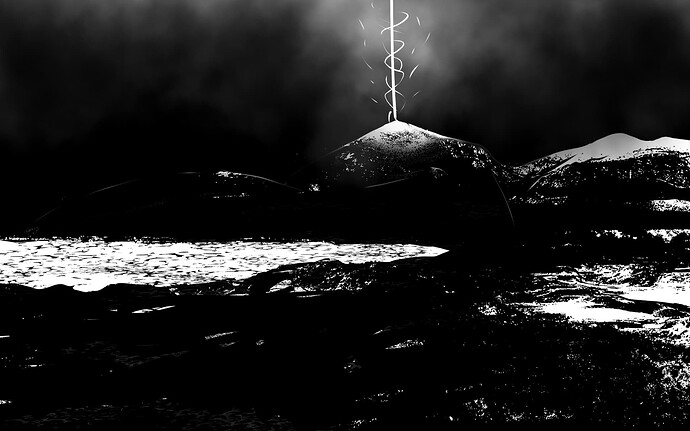Place of Power: The Great Cairn of Slieve Donard
Slieve Donard, also known by the pre-Christian name Slieve Slángha (or the even earlier Beann Boirche), is the tallest and most prominent of the Mourne mountains in the north-east of Hibernia. At the peak of Donard there is an ancient passage tomb called the great cairn, a place of great mystical significance.
From the outside the cairn appears to be a huge mound of loose stones, each about the size of a fist. Closer inspection reveals a doorway formed from three huge stones about halfway up the east face, leading into a series of internal chambers. The structure is ringed by 27 standing stones.
The great cairn is featured in several legends – it is allegedly the burial site of the mythical king Boirche, a cow-herd with the magical power to command cattle to do his bidding and to call them from anywhere in Ireland to his mountain. Another pre-Christian figure supposedly buried there is Slángha, a son of Partholón. A son of Manannán mac Lir was killed and buried on the mountain as well.
A fairy king rules from the mountain and plagued all of Ireland in the days of Conn of the hundred battles, and the tomb was used by fairy women to flee into the otherworld when being chased by Fionn mac Cumhaill. The current name of the mountain comes from St. Donard, a follower of St. Patrick who supposedly never died but rests under the mountain in a secret cave, as an eternal guardian. Locals make an annual pilgrimage up the mountain in honour of the saint. There is another stone structure on the peak a short distance from the great cairn. This is the remains of St. Donard's cell, an early Christian church. A stone lined well is cut into the mountain here. Because of the height this only collects rain water. Local belief attributes healing powers to the well, with the infirm sometimes making arduous pilgrimages up the mountain to be dipped in the holy well.
Needless to say, it being at once a fairy rath, an ancient wizard’s tomb, and a pilgrimage site makes this location a point of contention between the realms. The peak is a patchwork of faerie and divine auras (especially near the remains of the church) which fluctuate with time. On certain days where the divine and fairy auras both wane an older underlying magic aura reasserts itself. This aura is aligned with Mentem and enhances spells which control minds, be they ghosts, living people, or animals. The aura is usually only strength 1-2 but rises briefly to a 5 on the 31st of October for a span of 4 hours. At this point the aura plus alignment grant an overall +10 bonus to spells summoning and controlling the dead.
In addition the position of the mountain as the tallest peak in the region allows for Sight range spells to have exceptional reach when augmented with vision enhancing spells or powers.
The cairn is an excellent place to conduct ritual spells when the bonus is highest, but the characters will have to contend with truculent fairy monarchs, the spirits of dead kings, and a saint who guards the mountain!
NB: In real life the great cairn was largely destroyed during the 19th century leaving just a rough mound in the present day. The description above is based on descriptions and drawings predating this damage.
Things to do at the Great Cairn:
-
Evade the followers of St. Donard.
-
Perform necromantic rituals.
-
Get accosted by faeries.
-
Study the nature of the aura and the power of the ancient wizard-king Boirche.
-
Be healed at the holy well, or study its power. Is it connected to the saint and his miracles, or some older magic?
The disciples of the worm performing a necromantic ritual at the great cairn during Samhain.
